Tag Archives: Internet Access
Empowering a new generation of localization professionals
When her grandmother Chadia turned 80, Christina Hayek—an Arabic Language Manager at Google—and her sisters wanted to give their beloved sitto a gift that would bring her closer to them. Chadia lives in Lebanon, but her children and grandchildren are spread across the world. To bridge this geographical gap, Christina and her siblings gave their grandmother an Android smartphone. Much to Chadia’s surprise, she was able to use her phone in Arabic straight out of the box.
This isn’t magic—it’s the work of a dedicated localization team at Google, whose mission is to create a diverse user experience that fits every language and every culture. Spread over more than 30 countries, our team of passionate translators and reviewers makes sure that all Google products are fun and easy to use in 70+ languages—and sound natural to people everywhere. Localization goes beyond translation. For example, while references to baseball and donuts work well in the U.S., these aren’t necessarily popular concepts in other cultures. So for we might change them to football in Italy and croissant in France.
With more and more people from around the world coming online every day, the localization industry keeps growing—and so does the demand for great translators, reviewers, and localization professionals. So, as part of Google’s mission to build products for everyone and make the web globally accessible, no matter where people are, we’re launching a massive open online course (MOOC) called Localization Essentials.
Localization Essentials was developed in collaboration with Udacity, and is free to access. It covers all localization basics needed to develop global products, from the types of software that we use to the jobs available in this industry. By sharing our knowledge, we hope that more culturally relevant products will become available to people everywhere, and provide opportunities to them that they didn’t have before.
Source: Education
Empowering a new generation of localization professionals
When her grandmother Chadia turned 80, Christina Hayek—an Arabic Language Manager at Google—and her sisters wanted to give their beloved sitto a gift that would bring her closer to them. Chadia lives in Lebanon, but her children and grandchildren are spread across the world. To bridge this geographical gap, Christina and her siblings gave their grandmother an Android smartphone. Much to Chadia’s surprise, she was able to use her phone in Arabic straight out of the box.
This isn’t magic—it’s the work of a dedicated localization team at Google, whose mission is to create a diverse user experience that fits every language and every culture. Spread over more than 30 countries, our team of passionate translators and reviewers makes sure that all Google products are fun and easy to use in 70+ languages—and sound natural to people everywhere. Localization goes beyond translation. For example, while references to baseball and donuts work well in the U.S., these aren’t necessarily popular concepts in other cultures. So we might change them to football in Italy and croissant in France.
With more and more people from around the world coming online every day, the localization industry keeps growing—and so does the demand for great translators, reviewers, and localization professionals. So, as part of Google’s mission to build products for everyone and make the web globally accessible, no matter where people are, we’re launching a massive open online course (MOOC) called Localization Essentials.
Localization Essentials was developed in collaboration with Udacity, and is free to access. It covers all localization basics needed to develop global products, from the types of software that we use to the jobs available in this industry. By sharing our knowledge, we hope that more culturally relevant products will become available to people everywhere, and provide opportunities to them that they didn’t have before.
Source: Education
Empowering a new generation of localization professionals
When her grandmother Chadia turned 80, Christina Hayek—an Arabic Language Manager at Google—and her sisters wanted to give their beloved sitto a gift that would bring her closer to them. Chadia lives in Lebanon, but her children and grandchildren are spread across the world. To bridge this geographical gap, Christina and her siblings gave their grandmother an Android smartphone. Much to Chadia’s surprise, she was able to use her phone in Arabic straight out of the box.
This isn’t magic—it’s the work of a dedicated localization team at Google, whose mission is to create a diverse user experience that fits every language and every culture. Spread over more than 30 countries, our team of passionate translators and reviewers makes sure that all Google products are fun and easy to use in 70+ languages—and sound natural to people everywhere. Localization goes beyond translation. For example, while references to baseball and donuts work well in the U.S., these aren’t necessarily popular concepts in other cultures. So we might change them to football in Italy and croissant in France.
With more and more people from around the world coming online every day, the localization industry keeps growing—and so does the demand for great translators, reviewers, and localization professionals. So, as part of Google’s mission to build products for everyone and make the web globally accessible, no matter where people are, we’re launching a massive open online course (MOOC) called Localization Essentials.
Localization Essentials was developed in collaboration with Udacity, and is free to access. It covers all localization basics needed to develop global products, from the types of software that we use to the jobs available in this industry. By sharing our knowledge, we hope that more culturally relevant products will become available to people everywhere, and provide opportunities to them that they didn’t have before.
Source: Education
CSquared gets new investors to expand internet access in Africa
Three billion people around the world are now online, but access remains critically low in Africa, where only 10 percent of households can connect to the internet.
In 2011, a team of Googlers identified a major barrier to affordable, reliable broadband in Africa: the lack of fiber optic networks in large cities. This led to Project Link, an initiative to build world-class, high-speed urban fiber networks in Africa’s metropolises. In 2013 we folded these efforts under a new Google brand called CSquared with the aim of bringing other companies into the market, expanding access and lowering costs. CSquared has built more than 800 km of fiber in the cities of Kampala and Entebbe; and 840 km of fiber in the Ghanaian cities of Accra, Tema, and Kumasi. In both Ghana and Uganda, more than 25 internet service providers (ISPs) and mobile network operators (MNOs) now use these metro fiber networks to offer broadband services and 4G data to end users, with more than 1,200 tower and commercial building sites connected directly to CSquared’s fiber.
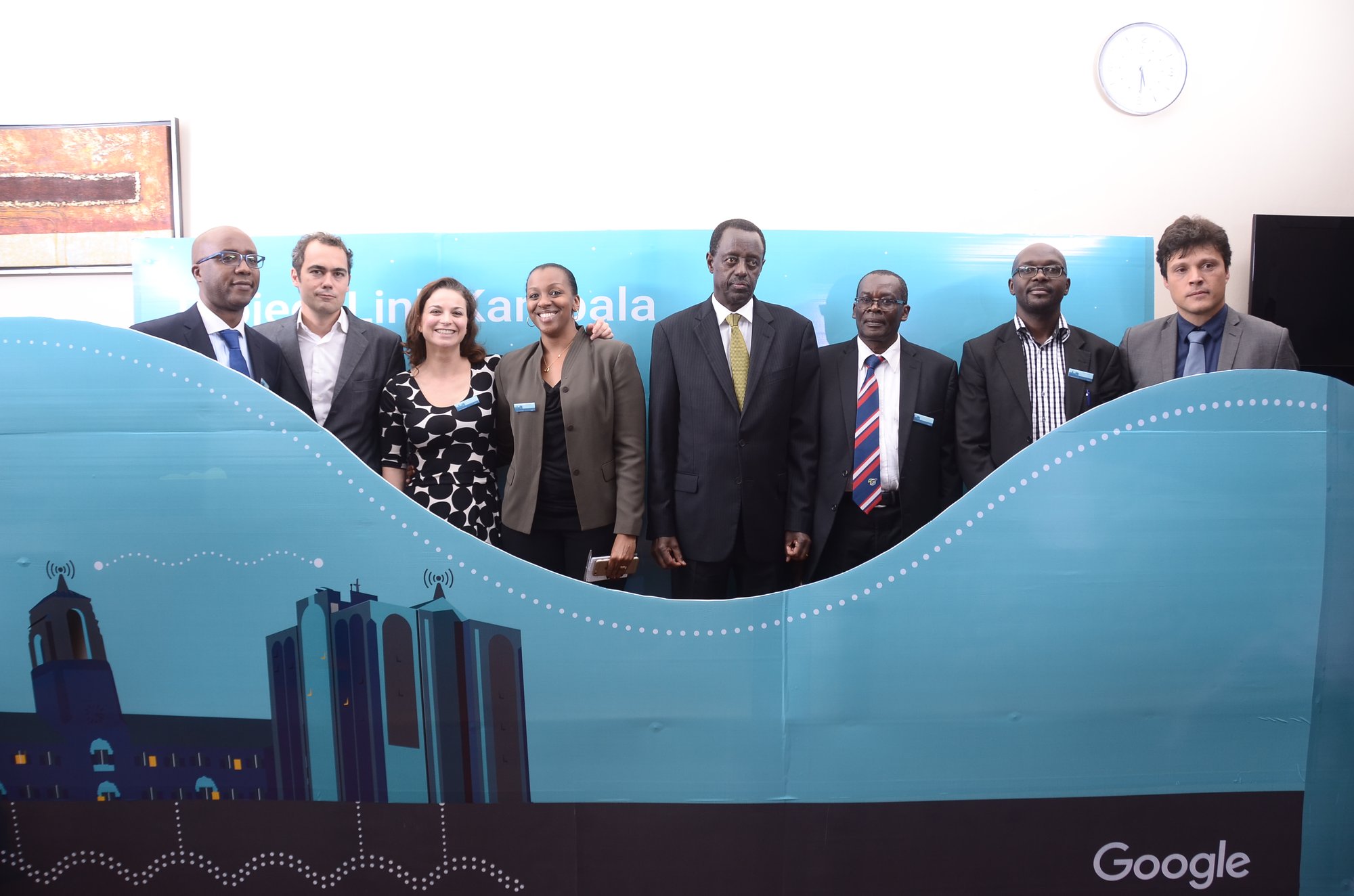
CSquared’s network infrastructure supports the needs of entrepreneurs, innovators, and corporate offices. For example, in Uganda, CSquared’s fiber system provides the high-speed last-mile connections for higher education and health research institutions located in the Greater Kampala Metropolitan Area through the Research and Education Network for Uganda.
In the process of building these wholesale-only, carrier-neutral networks, we realized that CSquared could move even faster by bringing in new partners with strong backgrounds and experience in infrastructure in Africa. So today, CSquared is becoming a four-way partnership that combines the expertise and experience of four companies: Google, Convergence Partners, International Finance Corporation (IFC), and Mitsui & Co., Ltd. CSquared will benefit from Convergence Partners’ deep experience of information and communication technology sector investing in sub-Saharan Africa, IFC's experience as the world’s largest global development finance institution focused on the private sector in emerging markets as well as Mitsui’s cross-industry capabilities, vast investment portfolio, global business presence, and experience as a strategic investor in the ICT segment. Together with our new partners, we believe CSquared can roll-out and operate affordable, high-speed, and reliable infrastructure to further expand internet access in Africa.
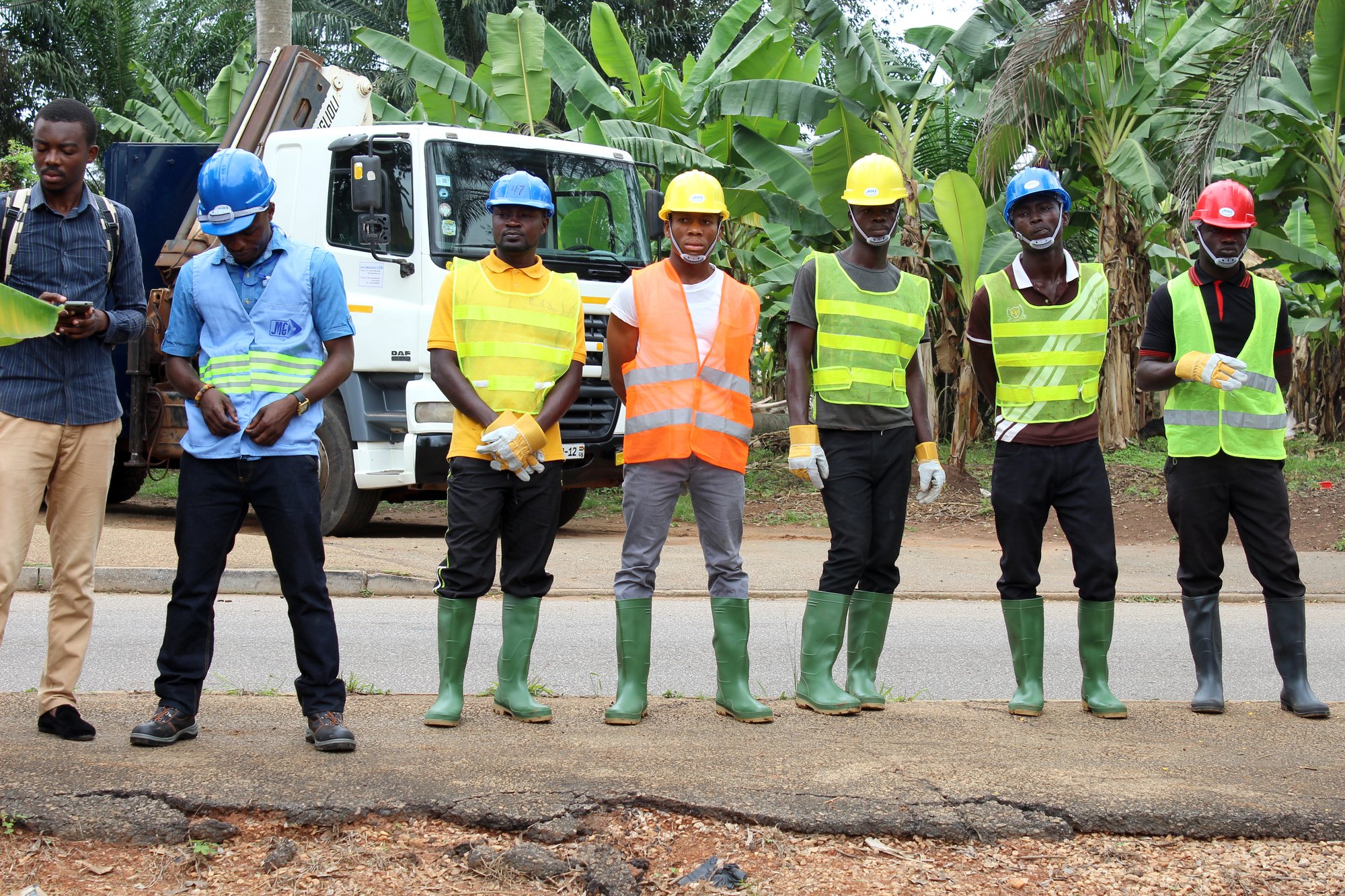
While CSquared will work to improve access, we’ll continue to give users, businesses and entrepreneurs in Africa a great experience online and help them make the most out of being connected to the internet. Our Digital Skills for Africa project, for example, has now trained more than 1 million people, and will look to provide offline versions of the training materials in local languages to reach individuals and businesses in low-access areas.
This is on top of our Google.org education grant of $2 million to support Tangerine, which boosts curriculum development in Kenya and boosts teachers’ skills. Earlier this year, we launched Street View in Ghana, Senegal and Uganda to help people better navigate their cities. Meanwhile, the African content ecosystem is growing: In November 2016 we held the first-ever SSA YouTube Awards in Johannesburg to support video creators in Africa.
The internet is transforming Africa, both Google and CSquared are committed to ensuring that as many people as possible have access to the internet and all the opportunities it can bring.
Source: The Official Google Blog
Google for Brazil: Building a more inclusive internet for everyone, everywhere
Google for Brazil: Building a more inclusive internet for everyone, everywhere
Brazilians love the internet. With more than 139 million people online, Brazil ranks among the top five internet populations in the world. Brazilians are also heavy users of Google products, from Search and Android to YouTube and Maps to Photos and Waze. And Brazil is an innovation hub for Google. Our engineering team in Belo Horizonte has made remarkable contributions to our products globally, such as improving health-related searches.
But we know there is still a lot of work to do in Brazil and elsewhere to make technology work better for more people. So today at our Google for Brazil event in São Paulo, we made several announcements about how we're working to make the internet more inclusive and to make our products work better for people in Brazil—and around the world.
Google Duo audio calling
Last year we created Google Duo to bring simple, high-quality video calling to users on Android and iOS. Now we’re adding audio-only calling in Duo. So in those moments when video calling isn't an option—like when you’re about to hop on a crowded bus or have a poor network connection—you can stay connected with family and friends through audio calling. Duo audio calls work well on all connection speeds and won't eat up your data. This feature will be available starting today first in Brazil, and we'll be rolling it out to users around the world in the coming days.
Google Allo file sharing and Smart Smiley in Brazilian Portuguese
Since launching Google Allo last September, users in countries like Brazil have requested the ability to share documents in group chats. Starting today, Android users everywhere will be able to share documents and other files (.pdf, .docs, .apk, .zip, and mp3) with friends on Allo. And for users in Brazil, we're also rolling out Smart Smiley in Portuguese, which uses machine learning to help you find the right emoji faster. Tap the Smart Smiley icon on the compose bar, and the app will suggest relevant emojis and stickers to help you finish your thought.
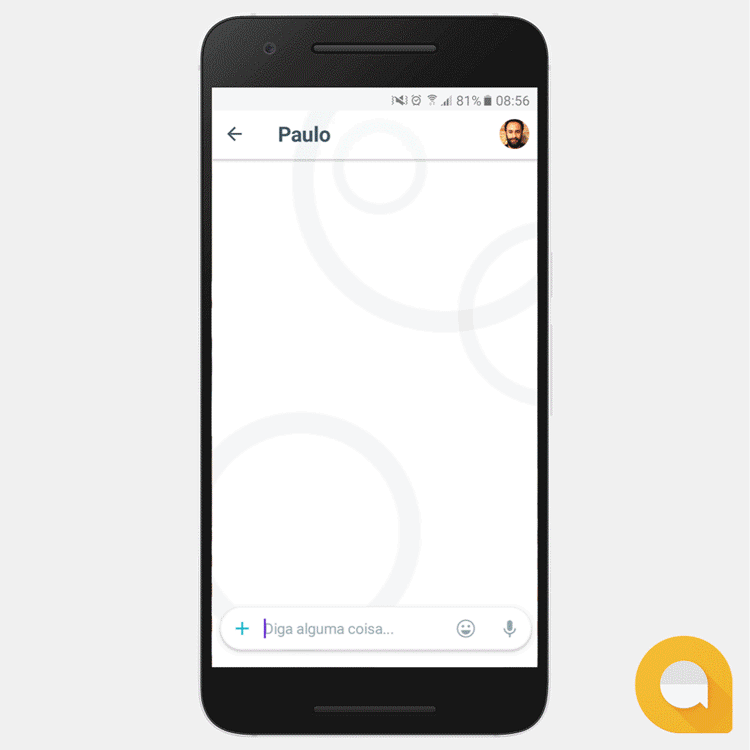
Google Photos: Faster backup and sharing, no matter the connection
We built Google Photos to help people store, organize and share photos and videos in a hassle-free way. But it can sometimes be difficult to back up and share photos and videos , especially when you're on the go and don't have an internet connection. So today we're rolling out two new features on Android and iOS to make backup and sharing easier on low connectivity. Now your photos will back up automatically in a lightweight preview quality that's fast on 2G connections and still looks great on a smartphone. And when a good Wi-Fi connection becomes available, your backed up photos will be replaced with high-quality versions. We’re also making it easier to share many photos at once even on low connectivity. Never mind if you're at the beach or hiking in the mountains, with Google Photos you can now share pictures quickly even with a spotty connection by sending first in low resolution so friends and family can view them right away. They'll later update in higher resolution when connectivity permits.
It can be hard to find time to organize your pictures, so Google Photos automatically creates animations, movies, collages, and albums. For movies, Google Photos will select the best moments, put them together with professional-style transitions, and set it all to music. With Brazil in mind, we recently rolled out a great example of these kinds of movies—your best photos from Carnival, set to a soundtrack of samba.
Maps location sharing
We're adding a new location sharing feature in Google Maps that lets you tell your friends and family where you are and when you’ll arrive at your destination. You have complete control over whether you share your location, who you share it with, and how long you share it. You can stop sharing at any time. No more "where are you now?" messages back and forth. To manage your location sharing settings across Google products go to the "Your personal info" section of My Account and select Location Sharing.
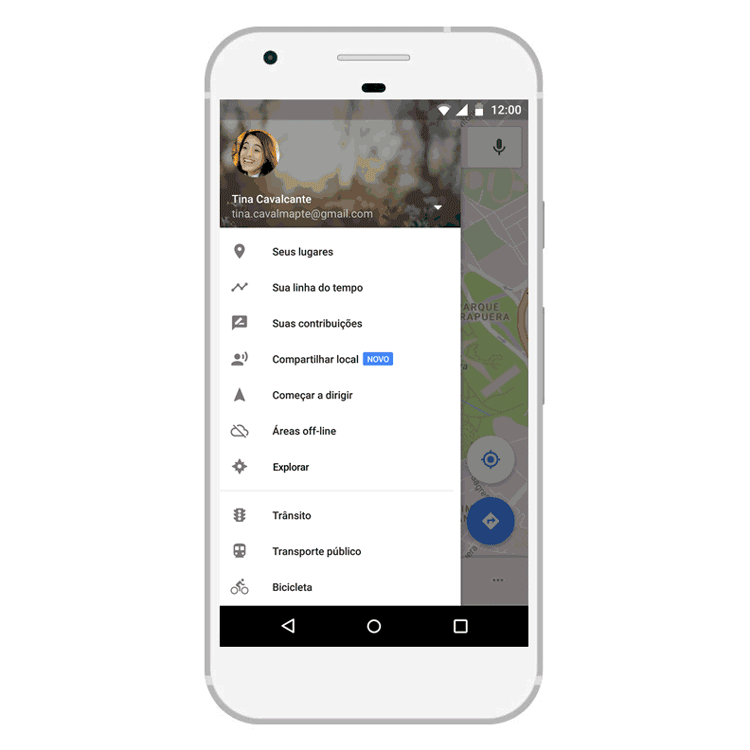
Posts on Google
Last year we started experimenting with allowing people and places to post directly on Google Search. We started out with the U.S. election and have completed dozens of other experiments around the world. Starting today, in the U.S. and Brazil, we’re taking it to the next step and opening up the application process so that organizations and people within specific categories can post directly on Google.
Now, when you search for museums, sports teams, sports leagues, movies and, in Brazil for now, musicians, you can find content from that participating organization or person, right on Google. So if you’re searching for the Henry Ford Museum in the U.S. or for Vanessa da Mata in Brazil, you'll see updates directly from the source with relevant information, like new exhibits, timely updates and interesting facts. Beyond these categories in the U.S. and Brazil, we’ll continue to experiment globally and look forward to making Search even more useful and timely.
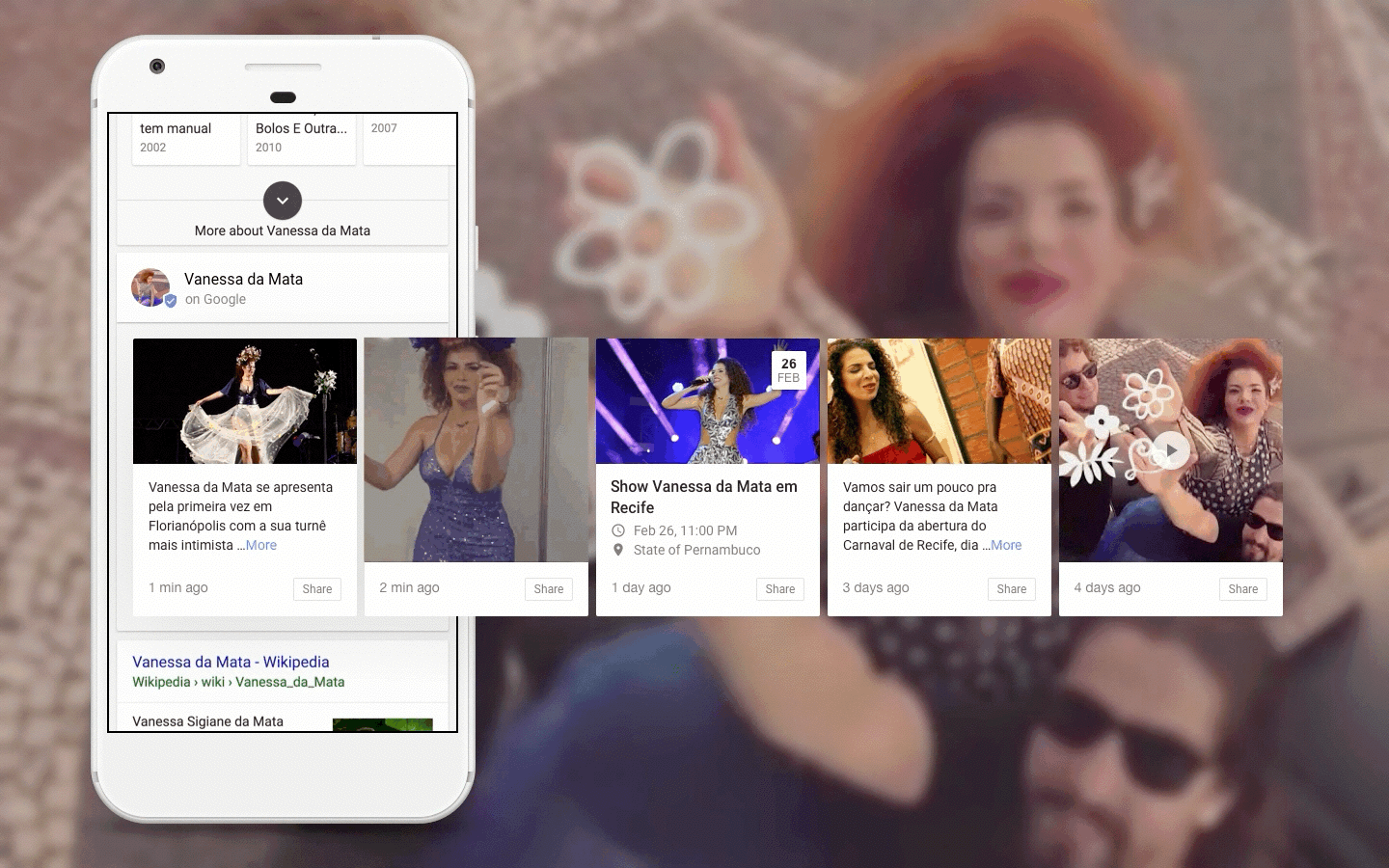
We made some Brazil-specific announcements at our event in São Paulo today as well, including plans to roll out the Google Assistant in Brazilian Portuguese on Android phones running Marshmallow or Nougat. We also extended a $5 million Google.org grant to the Lemann Foundation for an exciting tech-based education project in Brazil, launched the iconic São Paulo Museum of Art on Google Arts & Culture, and announced plans to roll out Waze Carpool in Brazil later this year.
All of today's announcements were inspired by your feedback. We do extensive research in places like Brazil, and we use those insights to make new product features tailored to people's needs in mobile-first countries. The great thing about building products for the most difficult, limited internet conditions is that you end up creating great products for everyone, everywhere.
Source: Google LatLong
Google for Brazil: Building a more inclusive internet for everyone, everywhere
Google for Brazil: Building a more inclusive internet for everyone, everywhere
Brazilians love the internet. With more than 139 million people online, Brazil ranks among the top five internet populations in the world. Brazilians are also heavy users of Google products, from Search and Android to YouTube and Maps to Photos and Waze. And Brazil is an innovation hub for Google. Our engineering team in Belo Horizonte has made remarkable contributions to our products globally, such as improving health-related searches.
But we know there is still a lot of work to do in Brazil and elsewhere to make technology work better for more people. So today at our Google for Brazil event in São Paulo, we made several announcements about how we're working to make the internet more inclusive and to make our products work better for people in Brazil—and around the world.
Google Duo audio calling
Last year we created Google Duo to bring simple, high-quality video calling to users on Android and iOS. Now we’re adding audio-only calling in Duo. So in those moments when video calling isn't an option—like when you’re about to hop on a crowded bus or have a poor network connection—you can stay connected with family and friends through audio calling. Duo audio calls work well on all connection speeds and won't eat up your data. This feature will be available starting today first in Brazil, and we'll be rolling it out to users around the world in the coming days.
Google Allo file sharing and Smart Smiley in Brazilian Portuguese
Since launching Google Allo last September, users in countries like Brazil have requested the ability to share documents in group chats. Starting today, Android users everywhere will be able to share documents and other files (.pdf, .docs, .apk, .zip, and mp3) with friends on Allo. And for users in Brazil, we're also rolling out Smart Smiley in Portuguese, which uses machine learning to help you find the right emoji faster. Tap the Smart Smiley icon on the compose bar, and the app will suggest relevant emojis and stickers to help you finish your thought.

Google Photos: Faster backup and sharing, no matter the connection
We built Google Photos to help people store, organize and share photos and videos in a hassle-free way. But it can sometimes be difficult to back up and share photos and videos, especially when you're on the go and don't have an internet connection. So today we're rolling out two new features to make backup and sharing easier on low connectivity. Now on Android your photos will back up automatically in a lightweight preview quality if you aren't able to back up in high quality, and still look great on a smartphone. And when a good Wi-Fi connection becomes available, your backed up photos will be replaced with high-quality versions. We’re also making it easier to share many photos at once even on low connectivity. Never mind if you're at the beach or hiking in the mountains, with Google Photos on Android and iOS you can now share pictures quickly even with a spotty connection by sending first in low resolution so friends and family can view them right away. They'll later update in higher resolution when connectivity permits.
It can be hard to find time to organize your pictures, so Google Photos automatically creates animations, movies, collages, and albums. For movies, Google Photos will select the best moments, put them together with professional-style transitions, and set it all to music. With Brazil in mind, we recently rolled out a great example of these kinds of movies—your best photos from Carnival, set to a soundtrack of samba.
Maps location sharing
We're adding a new location sharing feature in Google Maps that lets you tell your friends and family where you are and when you’ll arrive at your destination. You have complete control over whether you share your location, who you share it with, and how long you share it. You can stop sharing at any time. No more "where are you now?" messages back and forth. To manage your location sharing settings across Google products go to the "Your personal info" section of My Account and select Location Sharing.

Posts on Google
Last year we started experimenting with allowing people and places to post directly on Google Search. We started out with the U.S. election and have completed dozens of other experiments around the world. Starting today, in the U.S. and Brazil, we’re taking it to the next step and opening up the application process so that organizations and people within specific categories can post directly on Google.
Now, when you search for museums, sports teams, sports leagues, movies and, in Brazil for now, musicians, you can find content from that participating organization or person, right on Google. So if you’re searching for the Henry Ford Museum in the U.S. or for Vanessa da Mata in Brazil, you'll see updates directly from the source with relevant information, like new exhibits, timely updates and interesting facts. Beyond these categories in the U.S. and Brazil, we’ll continue to experiment globally and look forward to making Search even more useful and timely.

We made some Brazil-specific announcements at our event in São Paulo today as well, including plans to roll out the Google Assistant in Brazilian Portuguese on Android phones running Marshmallow or Nougat. We also extended a $5 million Google.org grant to the Lemann Foundation for an exciting tech-based education project in Brazil, launched the iconic São Paulo Museum of Art on Google Arts & Culture, and announced plans to roll out Waze Carpool in Brazil later this year.
All of today's announcements were inspired by your feedback. We do extensive research in places like Brazil, and we use those insights to make new product features tailored to people's needs in mobile-first countries. The great thing about building products for the most difficult, limited internet conditions is that you end up creating great products for everyone, everywhere.
Source: The Official Google Blog
Google for Brazil: Building a more inclusive internet for everyone, everywhere
Google for Brazil: Building a more inclusive internet for everyone, everywhere
Brazilians love the internet. With more than 139 million people online, Brazil ranks among the top five internet populations in the world. Brazilians are also heavy users of Google products, from Search and Android to YouTube and Maps to Photos and Waze. And Brazil is an innovation hub for Google. Our engineering team in Belo Horizonte has made remarkable contributions to our products globally, such as improving health-related searches.
But we know there is still a lot of work to do in Brazil and elsewhere to make technology work better for more people. So today at our Google for Brazil event in São Paulo, we made several announcements about how we're working to make the internet more inclusive and to make our products work better for people in Brazil—and around the world.
Google Duo audio calling
Last year we created Google Duo to bring simple, high-quality video calling to users on Android and iOS. Now we’re adding audio-only calling in Duo. So in those moments when video calling isn't an option—like when you’re about to hop on a crowded bus or have a poor network connection—you can stay connected with family and friends through audio calling. Duo audio calls work well on all connection speeds and won't eat up your data. This feature will be available starting today first in Brazil, and we'll be rolling it out to users around the world in the coming days.
Google Allo file sharing and Smart Smiley in Brazilian Portuguese
Since launching Google Allo last September, users in countries like Brazil have requested the ability to share documents in group chats. Starting today, Android users everywhere will be able to share documents and other files (.pdf, .docs, .apk, .zip, and mp3) with friends on Allo. And for users in Brazil, we're also rolling out Smart Smiley in Portuguese, which uses machine learning to help you find the right emoji faster. Tap the Smart Smiley icon on the compose bar, and the app will suggest relevant emojis and stickers to help you finish your thought.

Google Photos: Faster backup and sharing, no matter the connection
We built Google Photos to help people store, organize and share photos and videos in a hassle-free way. But it can sometimes be difficult to back up and share photos and videos, especially when you're on the go and don't have an internet connection. So today we're rolling out two new features to make backup and sharing easier on low connectivity. Now on Android your photos will back up automatically in a lightweight preview quality if you aren't able to back up in high quality, and still look great on a smartphone. And when a good Wi-Fi connection becomes available, your backed up photos will be replaced with high-quality versions. We’re also making it easier to share many photos at once even on low connectivity. Never mind if you're at the beach or hiking in the mountains, with Google Photos on Android and iOS you can now share pictures quickly even with a spotty connection by sending first in low resolution so friends and family can view them right away. They'll later update in higher resolution when connectivity permits.
It can be hard to find time to organize your pictures, so Google Photos automatically creates animations, movies, collages, and albums. For movies, Google Photos will select the best moments, put them together with professional-style transitions, and set it all to music. With Brazil in mind, we recently rolled out a great example of these kinds of movies—your best photos from Carnival, set to a soundtrack of samba.
Maps location sharing
We're adding a new location sharing feature in Google Maps that lets you tell your friends and family where you are and when you’ll arrive at your destination. You have complete control over whether you share your location, who you share it with, and how long you share it. You can stop sharing at any time. No more "where are you now?" messages back and forth. To manage your location sharing settings across Google products go to the "Your personal info" section of My Account and select Location Sharing.

Posts on Google
Last year we started experimenting with allowing people and places to post directly on Google Search. We started out with the U.S. election and have completed dozens of other experiments around the world. Starting today, in the U.S. and Brazil, we’re taking it to the next step and opening up the application process so that organizations and people within specific categories can post directly on Google.
Now, when you search for museums, sports teams, sports leagues, movies and, in Brazil for now, musicians, you can find content from that participating organization or person, right on Google. So if you’re searching for the Henry Ford Museum in the U.S. or for Vanessa da Mata in Brazil, you'll see updates directly from the source with relevant information, like new exhibits, timely updates and interesting facts. Beyond these categories in the U.S. and Brazil, we’ll continue to experiment globally and look forward to making Search even more useful and timely.

We made some Brazil-specific announcements at our event in São Paulo today as well, including plans to roll out the Google Assistant in Brazilian Portuguese on Android phones running Marshmallow or Nougat. We also extended a $5 million Google.org grant to the Lemann Foundation for an exciting tech-based education project in Brazil, launched the iconic São Paulo Museum of Art on Google Arts & Culture, and announced plans to roll out Waze Carpool in Brazil later this year.
All of today's announcements were inspired by your feedback. We do extensive research in places like Brazil, and we use those insights to make new product features tailored to people's needs in mobile-first countries. The great thing about building products for the most difficult, limited internet conditions is that you end up creating great products for everyone, everywhere.
Source: Search
Partnering toward the next generation of mobile networks
Source: Official Google India Blog
Partnering toward the next generation of mobile networks
Over the years, we’ve built and managed networking infrastructure to help us provide Google services to people around the world. Our infrastructure spans many areas, from the fabric that binds together servers within our data centers, to the backbone network that links these data centers, to our edge nodes which hundreds of network operators deploy to deliver our services efficiently. Across all of these, we’ve relied on common design and operational principles, such as the use of software defined networking (SDN), network function virtualization and site reliability engineering, to help us deliver our services reliably.
As people increasingly access the Internet through their mobile devices, mobile operators are now designing their next-generation networks based on many of the same principles that we’ve adopted to power our own networking infrastructure. To support our partners as they roll out these networks, we’re working on a number of initiatives that we’re excited to share progress on today.
We’re announcing that we’re partnering with leading mobile network operators globally, including Bharti Airtel and SK Telecom, and building a platform for operators to run their network services. This platform brings to partners a set of powerful building blocks that we have developed over time. Our SDN framework enables networks to adapt to new services and traffic patterns. Fast user space packet processing on commodity hardware increases the ability to deliver new features quickly while reducing costs. And simplified workflow management and automated testing help quickly launch and iterate on new features. This platform also builds on our existing efforts to jointly experiment with mobile operators on richer APIs. These APIs will enable new operational models and help operators bring new features (such as Smart Offline) to people.


We want to bring the benefits of this platform to as many people as possible. So, in addition to partnering with more operators for this platform, we’re also bringing our design and operational experience to CORD—a vibrant open-source project with active participation from leading mobile ecosystem partners.
There’s a lot more to come as we continue to partner with operators on their next generation networks.